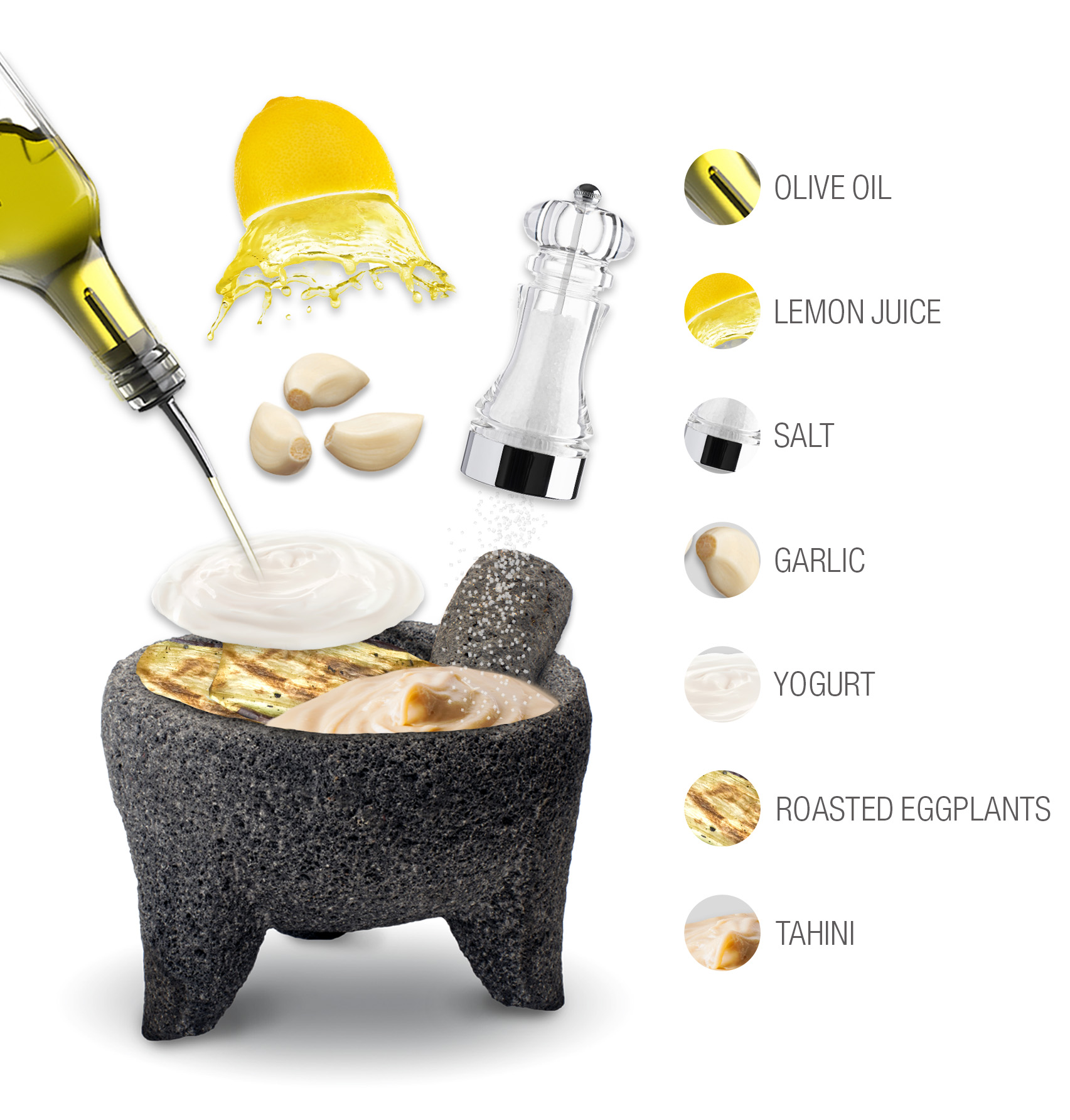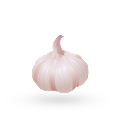MAIN INGREDIENTS
Mutabal is a Middle Eastern dip that's usually made with a combination of roasted eggplants, tahini, lemon juice, garlic, yogurt, olive oil, and salt. The ingredients are blended or mashed together until the dip develops a desired consistency, either smooth or a bit more coarse.
Once prepared, mutabal can be garnished with parsley, pomegranate seeds, or cilantro on top. If desired, onions can also be added to the mixture. It is recommended to serve mutabal as a part of a meze platter with pita bread on the side.
Baba ghanoush is a Middle Eastern dish that's mostly associated with Lebanon (although it's origins are also connected to Syria and Jordan), and it consists of roasted and puréed eggplants, garlic, olive oil, lemon juice, and tahini, with the occasional addition of mint, onions, and various spices.
Its name comes from the Arabic phrase baba gannuj, where baba means father or daddy, and gannuj means pampered or spoiled, referring to a supposed invention of baba ghanoush by a member of a royal harem.
Creamy texture and mild flavor are the main attributes of labneh; a traditional Middle Eastern strained yogurt that is prepared with yogurt and salt. No strict guidelines are used to produce it; plain full-fat yogurt is mixed with salt and left to strain for twelve to twenty-four hours.
During straining, the yogurt whey separates, and what is left is a thick and firm cheese-like product. Its texture can vary from creamy to dense, but it always has a relatively mild and slightly salty flavor. The name labneh is native to the Middle East, but strained yogurt varieties are found in numerous other countries and regions such as Greece, Turkey, Cyprus, Central Asia, the United States, Mexico, and the United Kingdom.
A variation on Levantine fatteh, fattet hummus typically consists of toasted or fried pieces of pita bread and chickpeas that have been layered in a serving dish before being drenched in a garlicky tahini-yogurt sauce.
This specialty is usually garnished with toasted pine nuts or almonds, fresh parsley or mint leaves, a drizzle of olive oil, and a touch of paprika or cayenne pepper on top. Some versions call for soaking the bread in broth or adding chickpea broth to the combination, while others call for using hummus paste instead of whole chickpeas.
This dish is commonly prepared across the Levant, and it may sometimes be served with chunks of sautéed lamb or beef on top.
Galayet bandora or qalayet bandora is a traditional dish originating from Jordan and Palestine. The dish is usually made with a combination of tomatoes, onions, garlic, olive oil, hot peppers, and salt. The ingredients are simply cooked in olive oil and the dish is then enjoyed with warm pita bread served on the side.
If desired, the dish can be sprinkled with pine nuts for a celebratory visual appearance. Traditionally, it is served as a main course for lunch or dinner, but it can also be served as an appetizer. Galayet bandora is especially popular in autumn.
TasteAtlas food rankings are based on the ratings of the TasteAtlas audience, with a series of mechanisms that recognize real users and that ignore bot, nationalist or local patriotic ratings, and give additional value to the ratings of users that the system recognizes as knowledgeable. For the “Top 5 Jordanian Appetizers” list until March 20, 2025, 1,775 ratings were recorded, of which 579 were recognized by the system as legitimate. TasteAtlas Rankings should not be seen as the final global conclusion about food. Their purpose is to promote excellent local foods, instill pride in traditional dishes, and arouse curiosity about dishes you haven’t tried.












